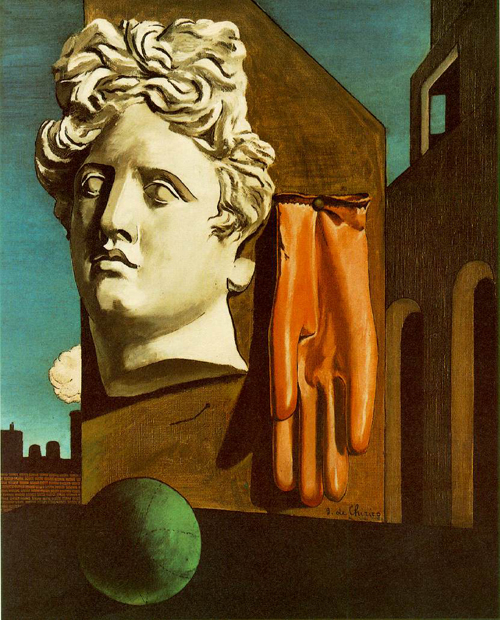The initial version of this essay was published under the title “Giorgio de Chirico et la perspective métaphysique” in Les Cahiers du Musée national d’art moderne, Paris, No.11. 1983, pp.33-53; and subsequently in a reworked form as “The Spirits Released: De Chirico and metaphysical perspective” in the "Italian Art Now", Art & Design, Academy Editions, 1989 Volume 5. No1/2 pp.6-17.
“One of the seminal painters of this century, De Chirico (1888-1978), is revered for his early Metaphysical paintings. Maurice Owen discerns a strong underlying Classical link between these and his later, frequently scorned, works. He remarks on the mysterious affinities between De Chirico’s works and then as yet undiscovered Pompeian wall paintings, connected not only by the use of perspective to create a psychological state of metastasis but also through iconological similarities”. (Academy Editions, 1989: 7 )
This internet version is the latest incarnation and takes this opportunity to re-evaluate previous material and incorporate new research.
The Volcano
This essay is about a mystery – a chronological mystery that involves a volcano (Vesuvius), an Italian artist (Giorgio de Chirico), the artist’s father (an aristocrat and railway architect) and ancient wall-paintings from Pompeii and Herculaneum. It also involves a series of sculptural constructions that initially revealed the fact that there was indeed a mystery, one that was woven into the fabric of twentieth century art – a mystery of truly Graeco-Roman proportions that until now lay dormant.
The source of this mystery is a perplexing chronological shift that coincided with the birth of modern art, which almost amounted to a reversal in historical time. At the beginning of the twentieth century the artist at the centre of this conundrum, Giorgio De Chirico, produced a series of paintings that significantly impacted on early and late twentieth century art. They became known as his metaphysical paintings (fig.1). Although much has been written about these early paintings they remain enigmatic. Recent evidence, however, indicates that there is a case to be made for the existence of iconographic and compositional similarities between these paintings and certain wall-paintings from Pompeii and Herculaneum, dating from approximately 80BC to 79AD. At first sight this may not appear an unusual observation in view of the numerous Classical references found in his paintings. But the plot thickens when we discover that De Chirico’s early paintings ‘pre-date’ their ancient counterparts. How can this possibly be true since the latter were painted 2,000 years before he embarked on his metaphysical oeuvre? The answer, however, is quite simple – the Volcano.
 1
1